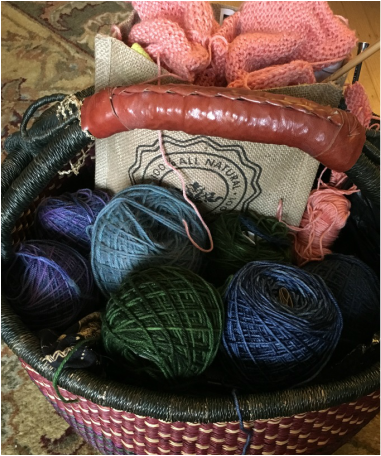 How do we define what is an art as opposed to what is a craft? As a grade seven teacher in BC, I teach both “Fine Arts” and “Applied Skills and Design,” and how I define these subjects makes a difference to how I teach them. I looked up the dictionary definition for both of these terms, and predictably, this made my question more complicated rather than less. Apparently, an art is “an expression or application of creative skill and imagination, especially through a visual medium,” while a craft is “an activity involving skill in making things by hand.” Even in the language used to define them, a craft is earthbound and everyday, while an art is high-flying, expressive and imaginative. It is interesting that so much of what we teach as Fine Arts actually starts with a craft. It has to start with the “skill in making things” whether it is ceramics, paintings, drama, music, or dance. Ceramics requires you to know how to work with clay, so that it doesn’t break; painting requires a knowledge of colour and form; drama starts with an understanding of movement and voice control; music is made of scales and chords and rhythm; and you have to learn the steps before you can dance. Crafts have so often and for so long taken second place to art, but it is a mistake to think that they are fully separate. Where they begin to diverge is in the “application of imagination,” and this is where teaching art becomes harder. Any Fine Arts curriculum has to, at some point, start marking students on their originality and creativity, but how do we make that happen? You can no more teach imagination than you can teach a plant to grow. You can give it an environment that is conducive to its growth, but by its very nature, imagination has to find its own path to the sunlight. The Applied Skills curriculum allows for a wide range of skills and crafts, and one of the units that I teach in my class is knitting. My students all get needles and yarn, and are taught basic skills, including how to knit and purl, and how to follow a pattern. This would seem to be a straightforward craft. No imagination is required; they simply have to learn the skills. Yet while some of them enjoy the satisfaction of learning those skills for their own sake, where they take them is not always something I can predict. One student made a piece of knitting that was, essentially, a mistake – she ended with far more stitches than she started, and instead of making a square, she made a sort of triangle. But instead of rejecting it as a failure, she sewed it around her hand into a wrist warmer. What she created was unplanned, an attractive and useful result of skills and imagination. For some students, painting seems impossible. Clay never works for them. Drawing is not their strength. The beauty of teaching a range of crafts is that they may find in it something that they can make into art. Alexander Calder, a 20th century artist who produced wire sculptures that he described as “drawing in space,” commented once “I think better in wire.” There is a place in art for those of us who think better in yarn.
0 Comments
Leave a Reply. |
Author
Jane Perrella. Teacher, writer. Expert knitter. Enthusiast of medieval swordplay, tea, Shakespeare, and Batman. Archives
June 2019
Categories |
 RSS Feed
RSS Feed
